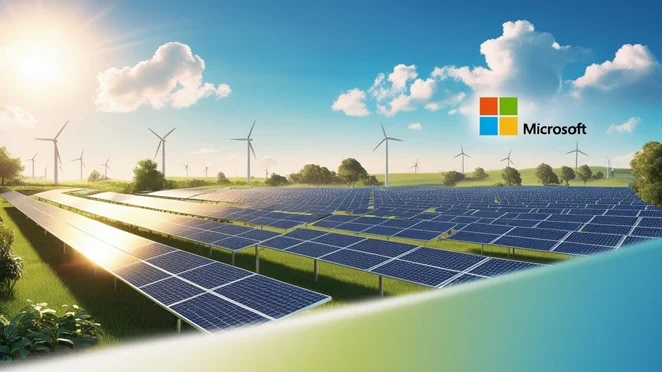Microsoft has recently increased its renewable energy portfolio by adding 389 megawatts to meet the growing power needs driven by its ambitions in artificial intelligence. This new power comes from three solar projects managed by EDP Renewables North America, located in southern Illinois and near Austin, Texas.
With this acquisition, Microsoft’s total contracted renewable energy capacity nears 20 gigawatts, according to its 2024 sustainability report, with this latest purchase representing about a 2% increase. Microsoft is rapidly securing these renewable resources to support its cloud and AI services. The company’s commitment to renewable sources, like wind and solar energy, is partly because these options can be developed quickly and at a relatively low cost.
Solar projects are particularly advantageous because they can start generating electricity in as little as 18 months, as opposed to the multi-year timeline required for conventional gas power plants. Many developers are designing projects that can be rolled out in phases to supply power to data centers swiftly.
To ensure continuous power availability, renewable energy developers are increasingly adopting hybrid systems that combine solar and wind energy with battery storage. These batteries store energy when conditions are favorable, making it possible to supply electricity even when renewable generation dips. Recently, Amazon entered into a contract related to such a development in Portugal.
Purchasing renewable energy enables Microsoft to operate its main activities without generating pollution. This strategy aligns with the company’s goal to become carbon-negative by 2030, which requires it to remove more carbon from the atmosphere than it emits.
To achieve harmful emissions, Microsoft is also investing in diverse carbon removal methods, including direct air capture and reforestation. Last month, the company announced a significant agreement with Chestnut Carbon to acquire over 7 million tons of carbon credits, which will help offset approximately half of its emissions for 2023.













